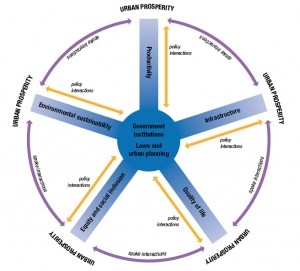Noise, heat, traffic. Crowds, cars and bikes. buildings put up on a financial whim. We are talking about the Indian city of Chennai, the city of chaos, with Mr. Antoni Styrczula, a coach and former advisor to the President of Poland, Aleksander Kwaśniewski.
Collegium Mazovia: In one of your blog posts about the trip to Chennai, India, you say: Chennai (…) a city that you can either love or hate. Today, I can say that I chose neither of those. I am stuck somewhere between “love” and “hate”. So what word describes best your impressions from Chennai?
Antoni Styrczula: Chaos.
– You say that for a European Chennai is a nightmare.
– Yes, it is. Chennai is composed of more than ten former villages, connected with four arteries. It is also the fourth most populated agglomeration in India. The city sprawl is enormous, it expands in an uncontrolled way. We must not forget that every day a few thousand peasants arrive there who get stranded in slums because they cannot afford neither to rent nor to buy a flat. A square foot of a newly constructed flat in Chennai costs from 100 to 200 USD. For many people it is beyond their reach. Another problem related to spatial development is a dense network of channels. Today they are large sewage canals that during the monsoon take hundreds of thousands of cubic meters of water and channel it to the Bay of Bengal. More and more often the developers bulldoze the canals in order to get new investment plots. For this reason the city drowns during the tropical rain. It happened last December when after one hour rainfall, there was a meter high level of water in the street. It totally paralyses the city. What’s more, there is a faulty and obsolete sewage system, built way back by the British. And there is an increasing number of cars, motorbikes and other vehicles…
– Who agrees to all that actions? After all, it can be very dangerous…
– Most often it’s relevant municipal departments. It may be dangerous but money opens many doors. A big problem in India is corruption on all levels of administration and all spheres of life. That is mainly why the Indian Congress Party lost the latest parliamentary elections. Narendra Modi, the new PM for the Indian People’s Party (BJP) is going to put an end to it.
– One of the entries on your blog is as follows: if a European wants to cross the street, he must forget all his habits and rules that red means stop and green means go. So what’s the way of crossing the street safely?
– Cities are rather safe because the traffic is quite slow. In many cities there is a speed limit of 30 kph. And a permanent traffic jam. Even if there are some traffic incidents in cities, there are not as many casualties as in Poland. However, outside cities it’s a different story. Tens of people are killed daily in traffic accidents. It is mainly because Indian drivers do not follow any traffic rules whatsoever. They often take over on road bends, going upwards or on unbroken line. It causes many head-on collisions. We must also take into account a terrible road infrastructure. There are many holes even in so-called highways. Pedestrians walk as they wish and where they wish, especially in rural areas and in towns. In those places traffic lanes and lights (if you are lucky to find them at all) have a purely decorative function.
– Indian design is masterful, colorful, in a way it has an opinion of being a prototype of natural and original beauty. Are Indian cities beautiful? Can you see a concern for a detail there?
– Beauty is relative because architecture must harmonize with some urban plan including roads, parks, shops, etc. This plan in Indian cities is hard to see, that’s why for a European they seem chaotic, overcrowded and dirty. Of course there are enclaves populated by middle and upper classes with gorgeous residences and gardens but they border poor neighborhoods with houses built by the inhabitants themselves with whatever they could find. I mean the biggest metropolises like Mumbai, New Delhi or Chennai. There are, certainly, some gems of architecture like the British neo-Gothic style but it is a British legacy. The Indian skyscrapers are similar to the Western ones. Concrete, glass and steel, with no particular style.
– What did you mean by saying that people build houses themselves?
– It is a system you can still see in Polish countryside as well. It means that the owner builds the house himself, with his family or friends. The Indians try to live in harmony with nature. However they understand it a bit differently than we do – mud huts instead of luxury apartments, clothes of eco-cotton and home grown carrots… It refers to the poor who usually have no choice. They cannot afford anything better. Especially in cities where flats and land are very expensive. The situation also differs from state to state. We must not forget that the country consists of 29 semi independent states. Each one is different, with its own language, history, culture and administration that holds extensive powers in education, culture, local taxes etc. Kerala, for example, is relatively well off and that’s why there are brick houses, clean and tidy. On the other hand, in poor Bihar it looks completely different. In fact you can see real mud huts and the standard of living is very low.
– Do people in India live in harmony with nature?
– It depends what you mean by nature. In India it looks different from what we know. It refers especially to their attitude to animals. The rule of ahimsa, non violence, is present and obeyed in all levels of their spirituality. The real problem in India is that people do not know the idea of public space at all. So if something belongs to all, it belongs to no one, which makes the public space one big waste heap where all Indian people – rich and poor – leave the rubbish.
– Does the concept of “nobody’s land” result from the fact that there is no one to take care of it or simply from the Indian nature?
– It results from “being an Indian” so from the philosophy of life and the history (including the British occupation). The civil society is a new thing to Indian people. Even Mahatma Gandhi repeatedly stigmatized indifference of his countrymen to dirt and litter in public places.
– I presume that waste segregation or waste limitation are quite abstract terms in the Indian context?
– Rather yes but it is also changing. Large scale programs have been implemented with an aim to purify main rivers in the country, especially the Ganges. In some cities there is a ban on plastic bags. Many states have introduced high standards in terms of harmful substances emission released by the industry. There are more and more LPG-powered vehicles in public transport. A few months ago the Prime Minister of India, Narendra Modi, launched an all-India campaign called Clean India. The government plans to build a thousand of public toilets which are supposed to decrease the level of dirt in public space. However, it is a slow and long process.
– And what is the reaction of people to such actions? I still remember my great grandmother who was outraged about the perspective of having her shopping packed in a paper bag instead of a plastic one. She thought it was an attempt to limit her autonomy.
– The reactions differ. The elites joined the campaign to show off a bit. But it takes generations to change the mentality of an average Indian, especially outside the city. Not so long ago I wanted to get rid of a cigarette butt in front of a luxury hotel. I looked for a garbage bin for quite some time. No success. So I asked at the reception desk where I could throw out the butt. I was shown the hotel driveway and told: “This is India”.
– What are the people in India like in everyday contact?
– Nice and friendly, yet a European should know and respect cultural differences, especially if in India. This is what many Poles have problems with. But this is a topic for another interview as each of 29 states is unique.






